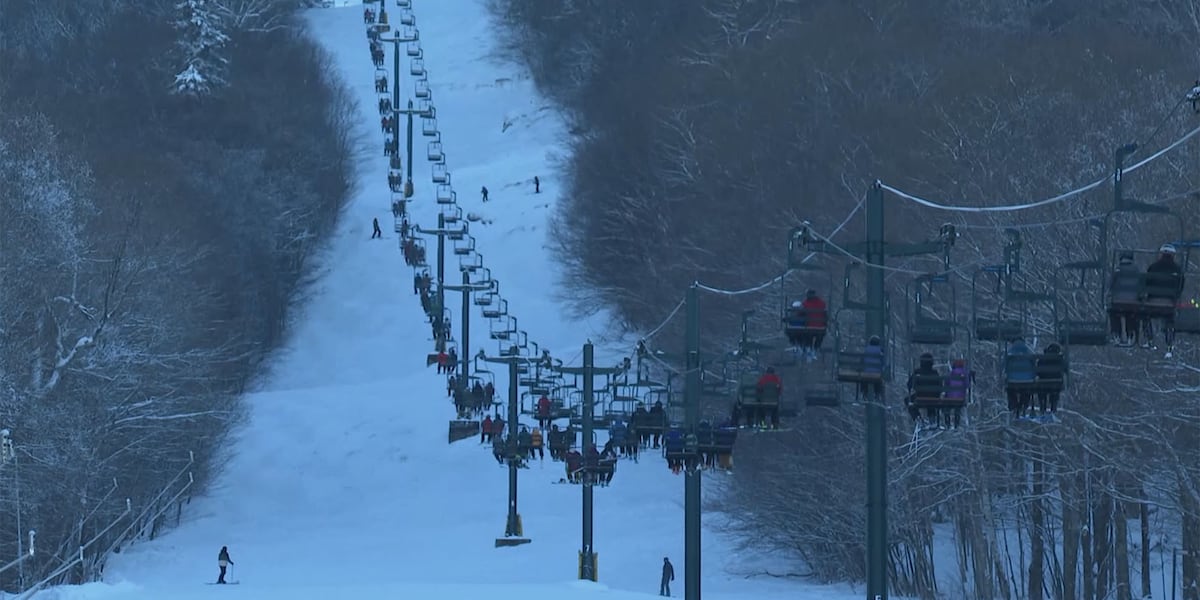LEWISTON – Deer and elk hunting in Idaho will be similar to last year, but the Idaho Department of Fish and Game says hunters in eastern Idaho will likely see firsthand the effects of a brutal winter that hit mule deer hard. Elk herds remain stable to increasing in most of the state. White-tailed deer in the Clearwater area could see a modest bump as herds start to recover from the deadly 2021 outbreak of epizootic hemorrhagic disease, and as most are aware by now, last year’s winter wreaked havoc on eastern Idaho’s mule deer population, particularly fawns.
From a statewide perspective, Idaho’s deer and elk herds remain healthy and resilient despite those setbacks, and statewide populations remain within traditional fluctuations.
Elk hunting is probably the best news with herds and harvests remaining steady over the last decade. Hunters have harvested above 20,000 animals for nine years in a row, and in 2022, hunters took home 20,952 elk, roughly a 3% increase from 2021.
Statewide whitetail harvest, most of which comes from the Panhandle and Clearwater regions, have seen a substantial drop since the all-time record in 2015, and last year’s harvest was about 21% below the 10-year average. Recent history has shown a fairly quick recovery after EHD outbreaks, and it remains to be seen whether that will be reflected in the 2023 whitetail harvest, but there are positive signs.
It’s hard to call Idaho’s mule deer situation a half-empty or half-full scenario, but what can be said is it could have been worse. One of the most severe winters on record hit the east side of the state roughly along the Wyoming and Utah borders, and no sugar-coating this one: Deer hunting there is going to be challenging.
But outside of there, it was a fairly average winter in the remainder of Idaho’s mule deer country, and hunting should be similar to last year.
Last Year’s Harvest
In 2022, hunters harvested 20,952 elk, 23,588 mule deer and 19,182 white-tailed deer. Elk harvest was up 3% over 2021, while combined deer harvest saw about a 10% drop. Hunter success rates in 2022 were 23% for elk, 29% for muleys and 38% for whitetails.
Elk Hunting
Overall, the numbers for Idaho elk are once again looking steady and impressive.
Elk populations tend to swing less drastically and sporadically than deer, and have continued to be relatively consistent in past years. Last year marked the ninth year in a row where elk harvest eclipsed 20,000, which ties the all-time state record for consecutive years of 20,000-plus elk harvested, set in the mid-1990s.
Last year proved to be right in line with other years’ harvest, with just a hundred more elk being harvested than 2021. Bulls dropped only slightly, from 11,142 in 2021 to 11,084 last year. Antlerless elk saw a slight increase (roughly 7%) in harvest numbers, from 2021 to 2022.
Fish and Game’s Deer and Elk Coordinator Toby Boudreau believes we will see much of the same, if not better conditions, for elk this fall.
“Overall, elk populations are looking good,” Boudreau said. “Elk are a lot more resilient than deer when it comes to harsh winters, and calf survival stayed relatively high through May.”
Last winter’s 91% cow and 72% calf survival — in units where cows and calves are collared and monitored — is right in line with that range and indicates a growing elk herd. (By comparison, in recent years, calf survival rates ranged from a low of about 52% to a high of 84%).
Overall, there remains plenty of elk for hunters to pursue in most regions of the state, including lots of general hunting opportunities. Elk hunters need to be diligent at finding areas where elk want to be, and not dwell in areas where the hunters want them to be, but the elk aren’t there. Elk herds are highly nomadic, and hunters need to be as well.
Source: IDFG
Last Year’s Numbers
- Total elk harvest in 2022: 20,952
- 2021 harvest total: 20,396
- Overall hunter success rate: 23%
- Antlered: 11,084
- Antlerless: 9,868
- Taken during general hunts: 12,988 (18% success rate)
- Taken during controlled hunts: 7,964 (43% success rate)
Mule Deer Hunting
“Before last winter hit, we’d been seeing steady growth in mule deer herds in southeast Idaho,” said Boudreau. “So much so that we were ready to propose additional antlerless hunt opportunities for the 2023 fall season.”
But by early January, it was clear Fish and Game was facing an extraordinary winter, and despite a large effort by staff and volunteers to emergency feed deer and elk, a lot of animals were lost due to deep, prolonged snow and frigid temperatures that stretched into spring.
During March season setting for 2023-24, Fish and Game wildlife managers chose to eliminate many proposed antlerless hunts.
Boudreau added that the hard winter could set herds back several years, and the department will continue to monitor the effects in the upcoming years.
Mule deer have traditionally experienced “boom and bust” cycles with herds holding stable or growing during normal winters, spiking after mild winters, and then roughly once in a decade, getting hit with a catastrophic winter like what happened in eastern Idaho.
Outside of eastern Idaho, mule deer survival was about average across most of the state, but considering how important eastern Idaho is to mule deer hunters, the effects will likely be reflected in a smaller statewide mule deer harvest this fall.
Hunters can expect to see fewer fawns and two-point bucks in those hard-hit areas, and smaller herds in general. Mule deer are resilient, and eastern Idaho’s herds will likely recover over time, assuming the next few winters are closer to normal.
Snowpacks were average to above-average across most of western, central and northern Idaho, and mule deer fawn survival was about average where they are monitored. That typically means stable herds or modest growth that is reflected in the fall buck harvest.
However, after two consecutive years of increased harvests starting in 2020 and an average/mild winter in 2021-22, all signs were pointing to modest growth last fall. But hunters harvested 2,498 fewer mule deer in 2022 than in 2021, a 9% drop. Mule deer harvest was also about 17% below the 10-year average (28,320).
So mule deer hunters are likely to have a smaller statewide harvest this fall, and expectations should be low in eastern Idaho and tempered elsewhere. Yes, there should still be plenty of mule deer available for hunters, and traditionally productive units outside of eastern Idaho will continue to be productive, but mule deer hunting will remain well below the boom years from 2014-16.

Source: IDFG
Last Year’s Numbers
- Total mule deer in 2022: 23,588
- 2021 harvest total: 26,086
- Overall hunter success rate: 29%
- Antlered: 19,596
- Antlerless: 3,991
- Taken during general hunts: 17,395 (26% success rate)
- Taken during controlled hunts: 6,243 (51% success rate)
White-Tailed Deer Hunting
Could this be the year whitetail hunting starts to bounce back after a sharp decline? Remains to be seen, but signs are encouraging.
Last year, an estimated 47,286 white-tailed deer hunters harvested 19,182 whitetails in 2022, 11% fewer deer than in 2021. A combined 38% of hunters notched their white-tailed deer tags in 2022.
It’s worth pointing out that the spike in overall deer and elk harvest during the 2020 and 2021 seasons was an anomaly, driven by a steep increase in hunters during the pandemic. While still impressive, it’s unlikely we’ll see that level of harvest moving forward.
Although down slightly from 2021 (39.5% success rate), the percentage of successful hunters is still in line with most years in the last 10 years.
Boudreau says that hunters can still expect to find stronger numbers of whitetails in and around the Clearwater Region but will likely find fewer deer in lower-elevation areas that were hit hard by EHD in 2021.
Alternatively, lower elevations in the Salmon River and Snake River corridors are proving to have ever-increasing amounts of whitetail, while still relatively low densities; hunting them in these locations can have challenges of their own.
White-tailed deer populations are typically a little more stable than mule deer populations, but that can quickly change when faced with disease outbreaks, as we saw in 2021 when a significant outbreak of EHD killed an estimated 6,000 to 10,000 whitetails, mostly in portions of the Clearwater Region.
For fall 2023, whitetails are continuing to rebound in the Clearwater and are looking healthy statewide.
“We’re still about 2-3 years out from a full recovery,” Boudreau said. “But they’re over the hump.”
Antlered white-tailed deer outnumbered antlerless by nearly double for yet another year in 2022. Of those 12,928 antlered deer harvested, an estimated 2,604 came in at five points or higher. Needless to say, Idaho grows some pretty massive whitetail bucks.
Overall, Idaho’s white-tailed deer population is looking good, including those populations within the Clearwater Region. Fish and Game wildlife staff will continue to monitor the EHD situation among deer and elk populations during the summer and fall, but so far, there have been no signs of EHD resurfacing.
Hunters in Units 14-15 are reminded that testing for chronic wasting disease is mandatory, and they must abide by other rules regarding hunting in CWD management zone (see details below).

Source: IDFG
Last Year’s Numbers
- Total white-tailed deer in 2022: 19,182
- 2021 harvest total: 21,418
- Overall hunter success rate: 38%
- Antlered: 12,928
- Antlerless: 6,254
- Taken during general hunts: 17,790 (40% success rate)
- Taken during controlled hunts: 1,391 (46% success rate)
Here’s a detailed deer and elk outlook for each region
Panhandle Region
Elk
Despite the harsh winter, elk did well in the Panhandle. Eighty-two percent of calves survived through spring, largely due to the colder temperatures that were paired with below-average precipitation. This allowed elk relatively easy movement and access to winter forage resources.
The below-average winter precipitation and a quick spring snow melt, however, has added to the effects of warmer, drier summer weather. The relatively hot, dry conditions in the region will likely impact fall forage resources and may lead to local shifts in elk distribution as they seek out wetter foraging habitats. While seasonal weather trends have their effects, Hunting Units 1, 4 and 6 continue to be among the highest producing elk units in the state. Hunters will have plenty of elk to pursue come fall.
Deer
While deer are generally more sensitive to weather, the Panhandle also saw good over-winter survival of fawns and adults. The region has plenty of great white-tailed deer hunting areas, particularly Hunting Units 1, 2, 3, 5 and 6, which are among the top 10 units in the state for white-tailed deer harvest.
What hunters should be aware of this fall
General season antlerless elk hunting opportunity was removed from both the A and B tags in Unit 4 due to concerns regarding elk population performance in that area.
The entire Panhandle Region is currently experiencing moderate-to-severe drought conditions. These conditions are currently predicted to persist into early fall along with the above-average temperatures. Hunters need to keep in mind that these hot, dry conditions mean high wildfire risk. Check for fire restrictions before heading to the field and be aware of fires in the area you plan to hunt.
Hunters across the Panhandle, but particularly those hunting in Unit 1, should remain vigilant in their bear awareness and identification skills as they are out in the woods. Grizzly bears are most common in Unit 1, but have been infrequently documented in Units 2, 3, 4, 4A, 6, 7 and 9. Black bears are common throughout most of the region.
Panhandle hunters should also remember to check Fish and Game’s website for information on the Large Tracts Program for access and motorized restrictions. It is important to remember these lands are private lands with rules set in place by the landowner and respecting these rules will help ensure that access continues to be available.
– Morgan Pfander, Regional Wildlife Biologist & Micah Ellstrom, Regional Wildlife Manager
Clearwater Region
Elk
Elk densities continue to remain relatively low in the Lolo, Selway and Hells Canyon zones. However, there have been some positive signs in the number of calves observed in recent years, and numerous elk can be found in certain areas.
Populations, hunter numbers and harvest success rates have remained reasonably stable in the Palouse Zone in recent years, with no reason to believe that will change this season. The Dworshak population has decreased over the last decade and continues to be an area that the department is monitoring. However, general season harvest rates have remained relatively consistent, and the population still offers good hunting opportunity. The Elk City Zone continues to show strong populations and harvest success in Unit 14, with Units 15 and 16 declining in population densities.
Hunters should be aware that treponeme-associated hoof disease (TAHD) has been detected in multiple units in the Clearwater Region. While elk infected with TAHD are safe to consume, biologists ask sportsmen to report elk that appear to have trouble walking or have abnormal hooves, and to submit abnormal hooves to department staff for testing.
Mule Deer
The most robust mule deer populations in the Clearwater region are located along the Snake and Salmon River breaks (Units 11, 13, 14 and 18), and these units are limited to controlled hunting opportunities. The department offers as much opportunity for harvest in these units as is sustainable. Some mule deer do occupy other units across the region, but primarily at relatively low densities and in isolated areas. However, hunters willing to put forth effort to access some of the region’s backcountry areas (Units 16A, 17, 19 and 20) can find good hunting for mule deer during general seasons.
White-tailed Deer
Although the region continues to have healthy white-tailed deer populations, an outbreak of epizootic hemorrhagic disease (EHD) in 2021 significantly reduced some local populations. This outbreak was widespread throughout North Idaho and had the most severe impacts in Units 8, 8A, 10A and 11A. Populations are rebounding, and abundant hunting opportunity with high success rates and relatively high percentages of bucks harvested (with 5 or more antler points per side) is available in much of the region, particularly at the agriculture/timber interface or units with substantial timber harvest and diverse habitats.
White-tailed deer hunters should be aware that Units 8 and 11A, as well as other portions of the region, primarily consist of private lands. Hunters are encouraged to be respectful of private landowners.
What hunters should be aware of this fall
Overall, big game hunting should be good again this season. Last winter, big game mortality was average to below average and did not cause detectable population declines. There were no large-scale disease outbreaks, outside of the existing presence of chronic wasting disease (CWD) in Unit 14.
A wet spring with abundant forage have shown promise for good recruitment of calves and fawns. However, following another hot and dry summer, hunters should be aware that wildfires may occur at any time and that area closures may result. Hunters are encouraged to check for wildfire closures before heading into the field and take precautions to reduce their chances of igniting an unintentional fire.
Sportsmen are also asked to please observe all restrictions in place regarding fires, as well as off-road and on-road travel restrictions. Hunters should be aware of special regulations regarding mandatory CWD testing and carcass transport of deer, elk or moose taken in Units 14 and 15. (For more information, see the CWD section below).
– Iver Hull, Regional Wildlife Biologist
Southwest Region
Elk
The 2021 elk abundance survey in the Boise River Zone revealed that both cows and bulls were over population objectives. While the recent harsh winter resulted in a moderate uptick in the number of calf mortalities, it is unlikely that extended cold weather negatively impacted survival of adult cows and bulls. Both general season and controlled hunt tag holders should experience an abundance of opportunity this season.
Following the 2023 Sawtooth Zone abundance survey, estimates of overwintering bulls showed a decline, while cow numbers increased when compared to the previous survey in 2017. However, it is important to remember that much of the huntable population migrates to the Sawtooth Zone during the spring migration, which are not captured during the winter aerial survey in that zone. Hunter success rates have remained consistent in the zone between surveys, but hunters may want to plan their hunts earlier in the season to increase their odds of encountering non-overwintering bulls before they migrate back out of the zone.
Elk hunting in the Owyhee Zone, which is limited to controlled hunts, will continue to provide hunters with excellent opportunities to harvest mature bulls this fall. These herds are stable and/or increasing, which allows for antlerless opportunity in the zone that is intended to slow population growth.
Mule Deer
With generous over-the-counter tags, any-weapon harvest seasons and its proximity to Idaho’s most populated area, Unit 39 is the state’s most popular and productive unit for mule deer hunters. Fawn recruitment in Unit 39 was severely reduced following the recent late-winter conditions, which may mean hunters could see fewer yearling bucks this fall. Mature deer encountered in the field should be similar to previous years, with winter conditions having limited effect on adult survival.
Mule deer in the southern portion of the Central Mountains (Units 33, 34 and 35) has experienced steady recovery since the winter of 2016-2017, with multiple years of increasing buck-to-doe ratios observed during aerial flights. Hunters should expect mature bucks at low densities due to remote hunting conditions and the short growing season of the Central Mountains.
General season mule deer hunting opportunity in the Owyhee units is limited to two-point bucks, and as a result, the harvest is largely comprised of yearlings. Excellent summer forage conditions last year led to an increased number of fawns observed in winter herd composition surveys. While snow levels were above average, conditions on Owyhee winter range were not as severe as those in Eastern Idaho, leading to higher-than-expected overwinter survival. The resulting increase in recruitment should translate into more yearling deer on the landscape compared to the last two years.
What hunters should be aware of this fall
Fish and Game is collecting Chronic Wasting Disease (CWD) samples from deer and elk in Unit 39 this fall as part of the statewide CWD monitoring effort. Hunters can submit lymph nodes or heads for sampling. Samples from deer and elk salvaged from vehicle collisions within Unit 39 will also be accepted.
Hunters in Unit 39 are reminded that the Boise River Elk B tag season will start October 27, which will overlap the last 5 days of the general deer season.
Hunters in Unit 40 should be aware that a Bureau of Land Management prescribed burn in Johnston Draw southwest of Reynolds may limit access during some early controlled hunts and/or during part of the general archery season. The burn will be conducted over a window of 3-5 days when conditions are ideal – sometime between Sept. 15 and Oct. 31.
Wildlife managers are continuing to encourage antlerless harvest in controlled hunts for Units 39 and 43. Unit 39 has been a very productive mule deer unit, and has been for a long time, but biologists have documented decreases in fawn production, a smaller number of fawns in proportion to the number of does and a decline in winter weights of fawns — all of which suggest the deer herd is approaching the top end of what the habitat can support.
– Ryan Walrath, Regional Wildlife Manager; David Bernasconi, Regional Wildlife Biologist; Rachel Curtis, Regional Wildlife Biologist
Southwest Region – McCall
Elk
Elk herds remain at or above objectives in most of the region with the exception of the Middle Fork Zone, which is still below objective. Wildlife staff surveyed the McCall Zone during February 2022, and elk numbers are within management objectives.
Brownlee has a high ratio of bulls to cows, and harvest continues to trend up. However, hunters should expect that some of these elk will be challenging to hunt due to hunter numbers and private land access.
The Weiser River Zone remains above objective, but harvest success recently started to drop off due to an intentional reduction of herds in order to meet population objectives. During 2023 season setting, antlerless opportunity was reduced on both the A and B tags. In addition, Fish and Game reorganized a few of the private land hunts to try and push elk off private land. Hunters should be aware that access can be difficult in portions of the Weiser River Zone that are privately owned.
Deer
Deer fawns collared across the Weiser-McCall area saw average overwinter survival at just over 60%. This follows three winters of above-average fawn survival and should result in good numbers of 1- to 5-year-old deer available to hunters this fall.
White-tailed deer herds are stable to slightly increasing across the region with the highest densities occurring in the northern portions. White-tailed deer seasons were extended in Units 23 and 24 during the 2023 season setting process.
Hunters pursuing mule deer on the regular deer tag are reminded that youth are restricted to harvesting antlered deer only in Units 23, 31 and 32A. In Units 22 and 32, youth may harvest antlered or antlerless animals during the first week of the season (Oct. 10-16) but may only harvest antlered deer during the second half of the season (Oct. 17-24).
What hunters should be aware of this fall
Archery hunters in the McCall Elk Zone should be aware that the South Fork Salmon River Road will be closed by the Forest Service for construction work from 8 a.m. to 5 p.m. Monday through Friday for roughly a month, starting on Sept. 5. There will be no access to sites along the river during construction. Access to the East Fork of the South Fork Salmon River and Yellow Pine will be via Lick Creek Road or Johnson Creek Road during this time.
Fish and Game is encouraging hunters to submit CWD samples this year, particularly from animals harvested in Unit 23 near the CWD management zone. Unit 23 hunters will see “head barrels” on some major access roads to help facilitate sampling. In addition, staff will operate a CWD sampling site in New Meadows during most weekends in October and November. Check the Fish and Game CWD webpage for times and locations of various sample collection opportunities.
The McCall office would like to hear about hunter observations of moose, to compile a little more information about moose distribution across the region. Please give the McCall office a call at (208) 634-8137 if you see a moose this fall so that we can record location information.
– Regan Berkley, Regional Wildlife Manager
Magic Valley Region
Elk
Efforts to reduce elk numbers in the Magic Valley Region, particularly in agriculture dominated zones, have been successful. Elk herds are now at or near population objectives across all zones after being over objective for several years. Future management will focus on stable to moderate elk herd growth while still offering some over-the-counter opportunities as a chance for family and friends to hunt together in areas with healthy elk herds.
Cool spring temperatures and abundant precipitation have created good habitat conditions for elk. Mid-summer temperatures have been high across the region, and forage will continue to dry out if the region does not receive any precipitation.
Cow elk harvest is largely dictated by weather, and without early snow this fall, hunters can expect to find elk at higher elevations than previous hunting seasons. The best elk hunting will be in areas away from roads and motorized trails.
Mule Deer
While mule deer numbers have been slowly increasing over the last several years, the winter of 2022-2023 resulted in slightly higher than average winter mortality for deer, especially fawns. Lower fawn survival will mean fewer yearling bucks on the mountain this fall.
While extended winter weather and a wet and cool spring reduced fawn survival, it did produce favorable habitat conditions for mule deer, which could mean above average antler growth. Good forage and abundant water typically mean deer will be found in smaller, more isolated groups.
What hunters should be aware of this fall
As part of Fish and Game’s annual CWD surveillance program, regional staff are interested in collecting samples from adult deer and elk in the northern half of the region (Units 43, 44, 45, 48, 49, 52, 52A and 53). Hunters can have their deer or elk sampled at the Magic Valley regional office or drop off a head or lymph node sample at one of three locations across the northern half of the region. To find drop-off locations go to idfg.idaho.gov/cwd.
– Mike McDonald, Regional Wildlife Manager
Southeast Region
Elk
Hunters should expect good elk hunting again this fall. Elk are more resilient to harsh environmental conditions than deer. Fish and Game staff have received numerous inquiries on how the harsh winter in 2023 impacted elk populations. Calf survival in 2023 was within the normal range and adult survival was very high.
As a result, elk populations should be similar to what hunters experienced in the past few years. Biologists surveyed the Diamond Creek and Bear River Zones in 2023, and the population estimates remain within objective. In the Bannock and Big Desert Zones aerial surveys are not conducted, however harvest and hunter success rates have remained stable.
Deer
Unfortunately, the record winter proved extremely challenging for mule deer, and as a result mule deer populations decreased significantly. Along the eastern portion of the region (Units 72 and 76) estimated winter mortality from collared mule deer indicated a 94% mortality rate on fawns and a 63% mortality rate on adult females. This translates to roughly 30–60% fewer deer on the landscape this fall, depending on what part of the region you are hunting in.
Winter was less impactful further to the west in the Bannock Zone, but biologists estimate high fawn and elevated adult mortality nonetheless. Hunters should expect significantly reduced abundance of mule deer this fall. Similarly, hunters will notice young and old age classes to be largely absent. Overall, biologists are anticipating drastic reductions in hunter success rates, total harvest and hunter participation because of the harsh winter.
The lone bright spot following the winter is the range conditions for deer that did survive. With the above-average snowpack and spring/summer rainfall, habitats within Southeast Idaho are in excellent condition for mule deer.
What hunters should be aware of this fall
Weather conditions during the hunting season can sometimes affect big game behavior and distribution and thus, hunter success. Doing some scouting of potential hunting areas may give hunters an idea of animal distribution and behavior. Hunters can also use preseason scouting to check road and trail accessibility and conditions, as well as make landowner contacts if they are planning to hunt on private property.
– Zach Lockyer, Southeast Region Wildlife Manager
Upper Snake Region
Elk
Elk numbers are looking good across the Upper Snake Region. Almost all of the region’s elk zones are currently at or above management objectives for both bulls and cows. Although this past winter was long and tough on animals, our elk herds fared far better than our deer populations. In fact, managers would not expect elk numbers to be noticeably different this fall than in recent years.
The one area where hunters might notice fewer elk than in years past would be Unit 50. Management strategies had been implemented to reduce overall elk populations across the Pioneer Zone for a number of years, and these efforts were successful in reducing elk numbers in Units 49 and 50. Harvest opportunities were adjusted to reduce harvest in these units for the upcoming 2023 and 2024 hunting seasons and allow for some limited growth in elk numbers in these areas over the next few years.
Mule Deer
Mule deer populations had been trending upward in the Upper Snake; however, last winter was harsh. Fawn survival was lower than 10% throughout the region, and adult doe survival was estimated around the 70% mark. This means that hunters should expect to see fewer deer on the hill across all age classes, but yearling deer (spikes and 2 points for bucks) numbers will be very low.
There should still be some mature deer on the landscape, but with the overall lower numbers and a largely missing yearling age class, harvest is expected to be down significantly this year.
The good news for those deer that did survive the winter is that consistent summer moisture and cooler temperatures have made for excellent forage and habitat conditions. We now need to string together a number of moderate winters to help deer populations rebuild.
White-tailed Deer
White-tailed deer survival was also impacted by the winter conditions in 2022 and 2023, but survival levels were better than that of mule deer. White-tailed deer hunters should anticipate fewer deer than last year’s number, but success rates in the more traditional white-tailed deer units (62, 63, 63A,65 and 67) should only be slightly below historic averages.
What hunters should be aware of this fall
Managers want to remind hunters to thoroughly review regulations for the 2023 seasons prior to going afield, because there were a number of changes in deer hunting opportunities — particularly in youth-only and antlerless deer hunting opportunities, as well as some changes in elk hunting opportunities.
– Curtis Hendricks, Regional Wildlife Manager
Salmon Region
Elk
Hunters should see good harvest opportunity again this season because most of the elk zones are either at or above objective. Early-season archery hunters in the Lemhi Zone may be impacted by the Hayden Fire emergency closures. Hunters can stay abreast of current fire closures or restrictions by checking with the Salmon-Challis National Forest, Fish and Game’s Fire Information webpage or the InciWeb incident information site.
The department would like to remind hunters that the any-weapon antlerless opportunity on the Salmon A tag has been removed for the 2023 season to protect the longevity of the general season A and B tag structure.
Mule Deer
Mule deer numbers are stable to increasing, and wildlife managers are expecting a good general season this year. The Salmon Region experienced an average winter, and although temperatures were cold, it was not accompanied by the deep snow that negatively impacted mule deer across the West. Overwinter deer survival was average to above average across the region. This was coupled with a wet spring that should lead to good fawn survival and antler growth.
The region is managed under a primarily general season structure. And although mule deer are common, the rugged terrain of the region typically leads to moderate hunter success rates. Mule deer can be found throughout the region, but densities tend to be highest in the western half of the region.
White-tailed Deer
White-tailed deer have become common in the Salmon Region over the past several decades. A liberal general season offers opportunity to pursue them from August through December. Hunters should note that most whitetails are found on private property, and hunters are responsible for obtaining permission before entering private land to hunt. Although they may occasionally be found on public lands, access to consistent whitetail hunting is limited in this region.
What hunters should be aware of this fall
Hunters headed to the field in the Salmon Region do not need to have their sights set on just deer or elk. The region offers the opportunity to pursue a mixed bag. Besides deer and elk, there are robust populations of mountain lions, black bears and wolves in the region. All of which are managed under a general over-the-counter tag structure in all units within the region. In addition, the wilderness portions of Units 21A and 28 and all of Unit 27 offer two bear and lion tag opportunities at a reduced price.
– Dennis Newman, Regional Wildlife Manager
Managing and monitoring for chronic wasting disease
Hunters in Units 14 and 15 must have deer, elk and moose tested for CWD, and they cannot remove whole carcasses from the field if they are leaving either of those units.
The following rules also apply:
Lymph node samples for CWD testing must be submitted within 10 days of harvest.
Hunters may take a CWD sample (lymph nodes taken from the head) in the field, or bring the animal’s head to a check station, drop-off location, or Idaho Fish and Game regional office.
Quarter or debone the animal at the kill site and leave gut piles and spine if traveling outside of Units 14 or 15.
If staying within Units 14 or 15, the spinal cords and heads must be disposed of in an approved solid waste landfill, dumpster or trash can that will be taken to an approved landfill.
Antlers should be removed in the field if the hunter is also taking a CWD sample in the field.
All heads removed from the kill site must be brought to a check station or Fish and Game office for CWD sampling. Fish and Game staff will assist with antler removal and cleaning, but will retain the remainder of the skull for proper disposal.
Animal heads will remain with Fish and Game and properly disposed of in an approved facility.
Mandatory Hunter Reports
Hunters must report 10 days after harvest, or if the hunter did not hunt or harvest (deer, elk, and pronghorn only), 10 days after the closing date of their season for each tag purchased.
When you file your Mandatory Hunter Report, you give critical hunt and harvest information to wildlife managers to maximize and sustain healthy herds. Help us collect this vital information and conserve your hunting, fishing and trapping dollars. For more information, check out Fish and Game’s Mandatory Hunter Report webpage.


























/cdn.vox-cdn.com/uploads/chorus_asset/file/24924653/236780_Google_AntiTrust_Trial_Custom_Art_CVirginia__0003_1.png)




/cdn.vox-cdn.com/uploads/chorus_asset/file/25672934/Metaphor_Key_Art_Horizontal.png)

